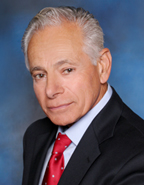
Ever since I was five years old I always new I would be a doctor. As immigrants, my parents wanted me to have a better life and to be in a profession that could be practiced anywhere in the world regardless of circumstances. I studied hard and for long hours. I grew up embracing education.
I felt honored to be accepted by the City University of New York. It was a school filled with refugee kids who all worked hard to achieve what their parents couldn’t because of the persecution in their home countries. I lived at home and commuted daily to the college on my motor scooter. I worked as dishwasher, bus boy and then waiter in the Catskill mountains during my spare time to save enough to attend medical school.
Graduating in 1961, cum laude, Phi Beta Kappa with a Bachelor of Science degree, I was prepared for the rigors of medical school. I was accepted to the State University of New York, Downstate Medical Center where I received my MD degree and later became certified by both the American Board of Surgery and the American Board of Plastic and Reconstructive Surgery. The last two years of medical school transitioned into a year of internship and six years of surgical residency training during which time we were all on call, 36 hours on, 12 hours off for nine years! It was a long period of sleepless nights coupled with intense education, and I would do it again in a heartbeat!
I settled in the beautiful state of New Hampshire to begin my practice in Plastic Surgery and raise a family. My early work involved repairing cleft lips and cleft palates. It was wonderful working with these courageous kids and their parents. The children were ten days old when I did the first of a number of stages to repair their deformity. I spent fourteen years as Chairman of Crippled Children’s Services (CCS) and encouraged my team to return our fees back to CCS so they would have enough funds to continue their important work. My life was filled covering a large geographic area of emergency trauma victims, performing surgery day and night; introducing microscopic hand surgery and head and neck cancer ablation and reconstruction. My career later incorporated cosmetic surgery including Botox for a variety of conditions such as cosmetic, migraine headaches and excessive sweating.
In 2005, a patient called the office to ask if I would treat her vaginismus with Botox. I never heard the term nor did I learn anything about this condition in medical school. I was stunned by the lack of medical information. I had enough experience with Botox that I was confident I could help her. The outcome was successful and my patient was finally able to achieve pain free intercourse.
Since then, I have read hundreds of emails and questionnaires from women pleading for help to feel normal, to raise children and to save their marriages. Each email and questionnaire tore at my heart. They lived in a world of silence, not sharing this with friends or family. The more severe cases of vaginismus often moved from therapist to therapist with neither an answer nor an effective treatment. Doctors told them to “just relax”, “it’s all in your head”. Their marriages were falling apart, budding relationships breaking up, they were tormented that they would never “be normal” and some even considered suicide. These were stories that needed to be told. “When Sex Seems Impossible. Stories of Vaginismus & How You Can Achieve Intimacy” was written to tell not only the stories but to give women a voice and a resource for information and treatment.
As I treated more women, I realized that the treatment of vaginismus became a “calling”. I applied for and received a grant to study the treatment of vaginismus. This was followed by Institutional Review Board (IRB) approval and then FDA approval with an Investigational New Drug (IND) approval for my continued research using Botox to treat vaginismus.
Vaginismus is now becoming more well known. Botox injections as a treatment for vaginismus results in a cure rate of well over 90% when combined with the use of dilators and post procedure counseling. For the many patients who are willing to do the work, I am there to help them. We stay in touch for many years after their treatment and I am thrilled to hear about the birthdays of their children.
This website is the result of years of research in the field of vaginismus. To support women with vaginismus I have created a forum to give women “a voice” and to share their knowledge with this community. Health care professionals are invited to learn from the educational content on the website. I continue to spend countless hours writing and teaching to disseminate new knowledge about vaginismus. Slowly we are tearing down the walls of silence. We are replacing ignorance with education. It is my dream that one day vaginismus will be as well known as erectile dysfunction and that no one needs to hide or be embarrassed. We can do it when we pull together to overcome this debilitating condition.
Peter Pacik, MD, FACS
Please visit Dr. Peter Pacik plastic surgery website which also contains information on vaginismus.
